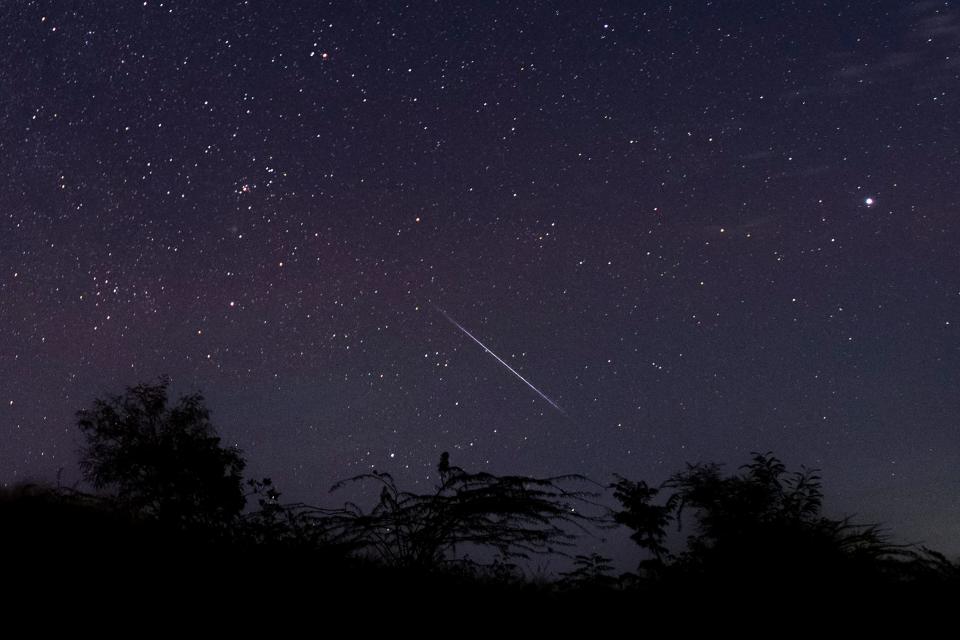One of the year's brightest meteor showers is underway: How to watch the Geminids
The Geminids, considered by astronomers and amateur stargazers alike to be one of the strongest and most consistent meteor showers, is underway.
Activity began Sunday, but you'll have plenty of chances to see the meteor trails whizzing across the night sky. When the Geminids reaches its peak in the middle of December, viewers will be able to see a whopping amount of meteors − as many as 120 bright yellow streaks per hour.
Here's what to know about the Geminid meteor shower, including when it peaks and what causes it.
'Unraveling new worlds': European astronomers find clouds made of sand on distant exoplanet

When is the Geminid meteor shower? When does it peak?
The Geminids are active now through Dec. 24, but activity will peak between Dec. 13 and 14, according to the American Meteor Society.
Originating from the area of the constellation Gemini, the Geminids are intensely bright and fast meteors that are considered once of the best cosmic shows of the year.
'Are we alone?' If extraterrestrials are out there, $200 million gift should help SETI find them
How to watch the Geminid meteor shower
What makes the Geminids special is that they are one of the best opportunities for young stargazers to catch a glimpse of a meteor shower without staying up well past their bedtime.
While the shower is best viewed during the night and predawn hours, activity typically begins around 9 or 10 p.m., according to NASA. What's more, the shower is visible across the globe.
To view the Geminids:
Find an area not polluted by city lights or street lamps;
Prepare for winter temperatures with blankets, warm clothes and a lawn chair;
Face south and look up at the sky. It takes about 30 minutes in the dark for our eyes to adapt to the night skies and see the meteors.
Space junk: How aging satellites and lost astronaut tools contribute to a growing orbital threat
What causes the Geminid meteor shower?
Meteor showers occur when Earth passes through debris trails left by comets and other space objects. The debris that collides with our atmosphere disintegrates, creating fiery and colorful streaks in the sky, NASA said.
But unlike most meteor showers, the Geminid meteor shower doesn't originate from a comet, but from an asteroid.
Scientists think that 3200 Phaethon may have broken apart under the stresses of the asteroid's rotation, which caused it to eject billions of tons of dust and debris into the solar system.
The small asteroid, which is more than 3 miles in diameter, takes 1.4 years to orbit the Sun. Phaethon approaches so close to the Sun that it was named for the Greek myth who drove the sun-god Helios' chariot.
While it is now one of the year's strongest meteor showers, the Geminids didn't start out that way, according to NASA. When the shower first began appearing in the mid-1800s, only 10 to 20 meteors could be seen per hour.
Since that time, the Geminids have grown into a major meteor shower that peaks with 120 Geminid meteors visible per hour under perfect conditions.
Eric Lagatta covers breaking and trending news for USA TODAY. Reach him at elagatta@gannett.com
This article originally appeared on USA TODAY: Geminid meteor shower is active. Here's when it peaks and how to watch

